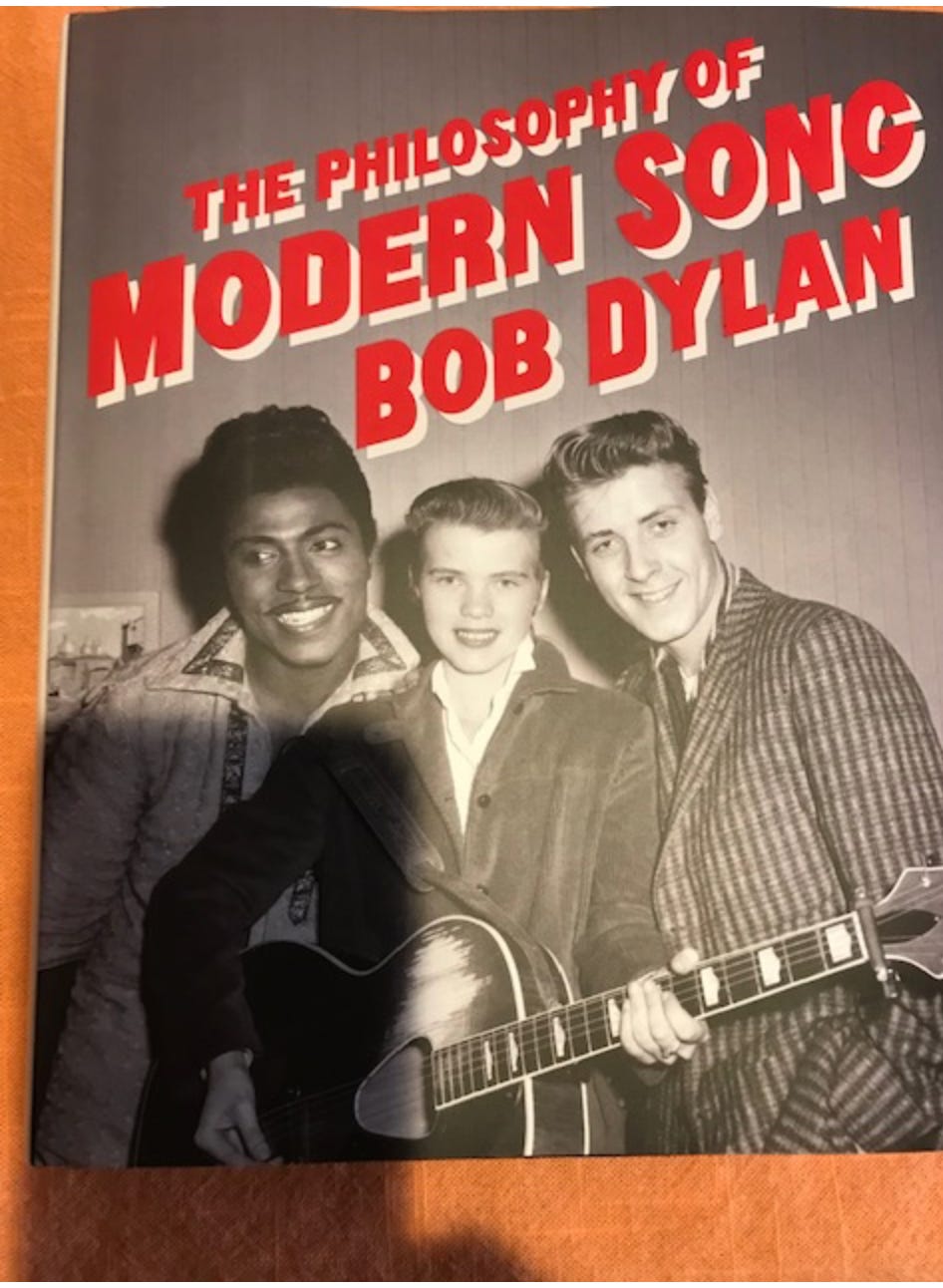I started to write about the book, but I’m so fascinated by the cover that the review went sideways. Look for words about the words tomorrow or Sunday. WR
Photo © by Bruce Perry, The Sydney Morning Herald, Fairfax Media via Getty Images
The cover photo is three personages representing Father, the Son, and the Holy Ghost, as they appeared in human form in Australia in 1957 on what is known as a "rock and roll" tour. But who's who? I'm guessing Little Richard (left) is the Father. Eddie Cochran, on the right, is the Holy Ghost, having left his corporeal body in a car crash while riding in a taxi from Bristol, England, to London in 1960.
It is the same accident that crippled Gene Vincent, pretty much putting putting a be-bop-a-lula end to his career, though he remained a hero to British "rockers," in the famous early-1960s mods v. rockers rivalry. This matter was wending its way through the British courts until resolved by featured actor Ringo Starr in the 1964 Beatles musical comedy A Hard Day's Night, directed by Richard Lester.
Asked by a reporter if he was a mod or a rocker, Mr. Starr replied: "I'm a mocker." This united the U.K.’s battling teen tribes and launched the Pax Britannia at the dawn of the English Invasion of America.
In the middle is the Son, who is yet a Woman with what in 1957 would have been considered a butch haircut, a pompadour (we don't see her ponytail), holding a guitar. Her stage name was Alis Lesley, now 84. She was from Arizona, where she still lives, and one of the few sides she recorded was "Heartbreak Harry." I expect a cover from some young singer doing a tribute to Harry Styles.
Alis Lesley rhymes with Elvis Presley. Her position in the marketplace: "the female Elvis Presley." She was said to be a wild hip-wiggler herself. On the cover, she is holding a guitar.
It does not appear to be an electric guitar, but that's not to say she never played one.
At some time in the recent past as peer reviewer for an academic journal, I was asked to comment on a manuscript whose thesis had to do with acknowledging the electric guitar as a "technophallus." I declined to read any more of the manuscript, on the grounds that the concept was, in plain Yiddish, schmegegge. (Usually, a schmegegge is a person, but I am using the noun form that means nonsense, hokum, a message that conveys no meaning. And that's no bubbemeister.)
Lesley left show business in 1960 and lived a normal life, whatever that is. Born in 1938, she would have been 19 years old in this picture, and while Cochran looks directly into the camera, Little Richard's eyes are slightly askance, as if he wants to take our attention away from what he might be doing with his left hand behind Alis Lesley's back. Or butt. I think Richard is a little in love with her. These sinful feelings may have short-circuited him altogether.
It was in Australia in 1957 that Little Richard renounced rock and roll to preach the gospel. There have been many variations on the story of how this happened: My original authority, the disc jockey Murray "the K" Kaufman, then of WINS 1010 in New York, said that Richard came to this conversion on a ship across the Pacific when during a raging storm promised to throw all of his precious jewelry into the ocean and preach God’s message if the Lord spared his life. The storm subsided, and Richard kept his side of the deal, baptizing his diamond rings by tossing them into the Pacific.
But the most recent wrinkle I read about, from writer/historian Paul Sexton on Universal Music's Udiscovermusic Oct. 12, 2022, is that on that day in 1957, while still in Australia, he told an audience in Sydney: "If you want to live with the Lord, you can’t rock’n’roll too. God doesn’t like it.” He revealed that he had dreamed about his own damnation, after praying to God when one of the engines on a plane in which he was flying caught fire. Legend records that the wild rocker threw four diamond rings (valued at $8000) into Sydney’s Hunter River."
The Hunter River is, ironically, part of the watershed of New South Wales' mountains known as the Liverpool Range. Five years later, in 1962, Little Richard stuck his toe back into rock and roll when he was in Germany and toured with Liverpool's temporary exiles, the Beatles. Whoo!
So, the cover represents many things: the heyday of rock and roll and its incipient, first awareness of its own mortality. More than "American Pie," which mourned the passing of Buddy Holly, Ritchie Valens, and the Big Bopper in 1959, this photo hints at the simultaneous vitality and frailty of rock and roll. The triumvirate of Little Richard's gospel soul; Eddie Cochran's lean into rockabilly; and Alis Lesley, the female incarnation of Elvis Presley. Black/white, male/female, all done by 1960, in the land that gave us AC/DC.
The same year, Bob Dylan was enrolled at the University of Minnesota (fall 1959-fall 1960) and you know, riding boxcars, picking cotton, improving his guitar technique with the ghost of Robert Johnson on Highway 61 between Duluth, Minn., and Lake Superior, and maybe even recording a song called "Hey, Little Richard," that exists as a You Tube song fragment if you check the Untold Dylan archives for a sound, skeptical appraisal.





Thank you, Diane. Word also came through around the time I pressed the “send” button that Jerry Lee Lewis has gone to the next realm.
Another rewarding read, Wayne. Slate's War Games columnist Fred Kaplan wrote a book entitled "1959" because he considered that year such a hinge in American culture and politics. If the era is of interest, locating a copy might be worth your time.